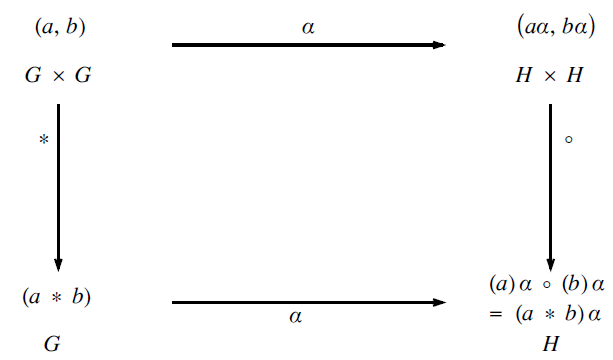No CrossRef data available.
Article contents
Verifying non-isomorphism of groups
Published online by Cambridge University Press: 13 October 2021
Extract
The concept of isomorphism is central to group theory, indeed to all of abstract algebra. Two groups {G, *} and {H, ο}are said to be isomorphic to each other if there exists a set bijection α from G onto H, such that  $$\left( {a\;*\;b} \right)\alpha = \left( a \right)\alpha \; \circ \;(b)\alpha $$ for all a, b ∈ G. This can be illustrated by whatis usually known as a commutative diagram:
$$\left( {a\;*\;b} \right)\alpha = \left( a \right)\alpha \; \circ \;(b)\alpha $$ for all a, b ∈ G. This can be illustrated by whatis usually known as a commutative diagram:

Information
- Type
- Articles
- Information
- Copyright
- © The Mathematical Association 2021
References
Frobenius, F. G., Uber die Darstellung der endlichen Gruppen dursch lineare substitutionen, Sitz. Kon. Preuss. Acad. Wiss. Berlin (1897) pp. 944-1015.Google Scholar
Formanek, E. and Sibley, D., The Group Determinant determines the group, Proc. Amer. Math. Soc. 112 (3) (1991) pp. 649-656.CrossRefGoogle Scholar


